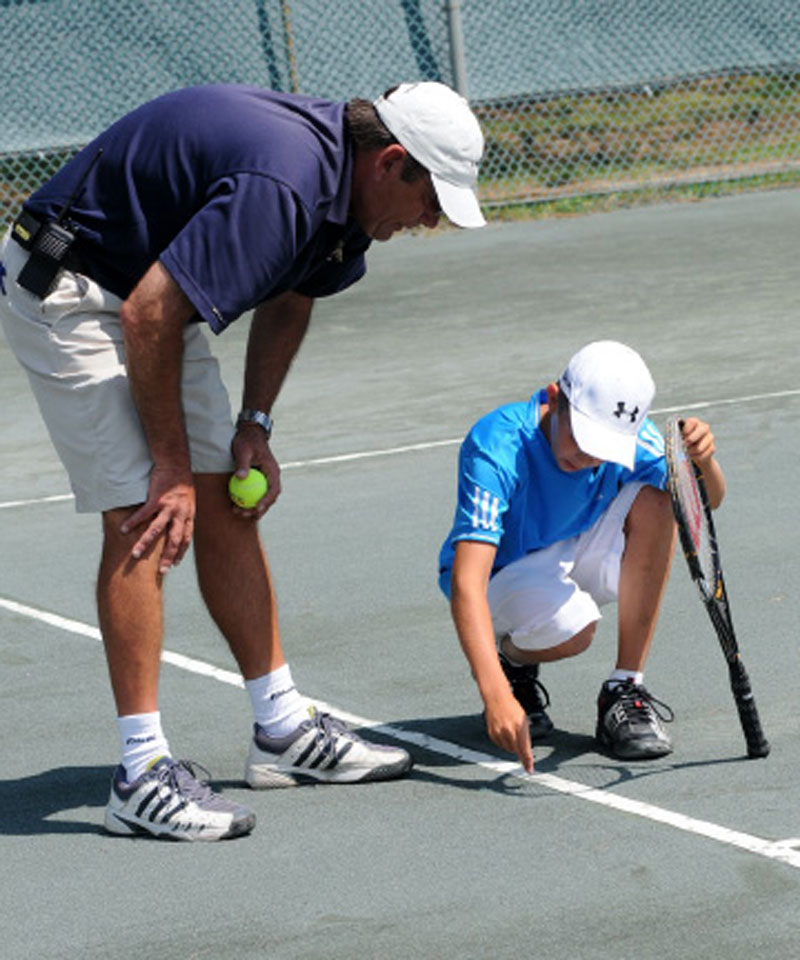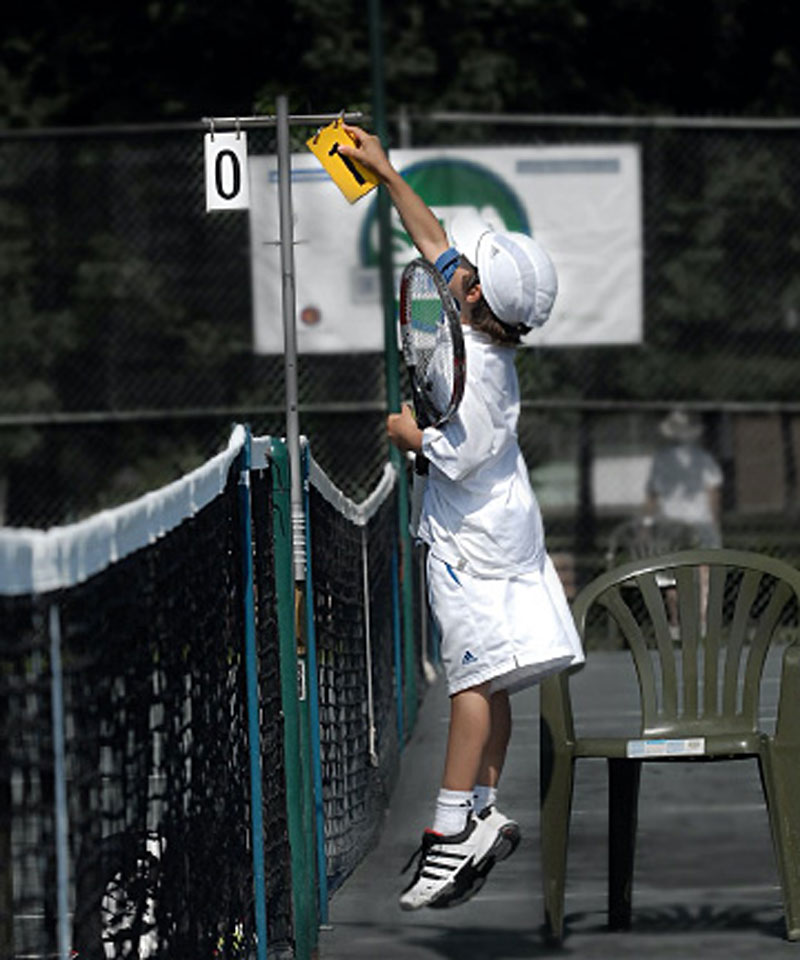

Are you one of the growing number of players wanting to get more competitive with your tennis? Do you want to move on from pick-up games to playing league or team matches, or even entering local or provincial events?
'The Competitive Edge' by lifelong player and coach Adrian Coles, features easy to digest tips and strategies to help keen recreational competitors play smarter. Improving stroke technique certainly helps but that requires a great deal of deliberate practice. A quicker way is to sharpen tactical skills whilst still using the strokes you've already got! He will cover topics often overlooked or even glossed over in on court instruction when hitting lots of balls is what is appreciated most.
This ONTENNIS exclusive series is a must-read for anyone who plays tennis at the recreational level and is interested in optimizing their match-play competitive experience. To access the other stories in the series, visit www.ontennis.ca.
Make sure you have "The Competitive Edge"!
Competing Rules
For those of you who want to move on from pick-up games, this outlines the differences between casual recreational play rules and the more precise standards of competition.
What is acceptable and normal in social tennis may be frowned upon when competing against strangers. Being aware of these things can save a lot of frustration and embarrassment!
Once you start competing, you may feel more pressure to play well, and so we look at the often-posed question 'Why do I seem to play better in practice than in a match?' Learn to judge your match performances realistically and to stay positive. Becoming aware of parts of your game that could use a few tweaks is the bonus, showing you what to work on.
'Stage Fright' is about understanding the stages of a match, from the disciplined warm-up, through the opening 3 games, to the business end of a set. Don't resign yourself to having an 'off-day'; learn to accept what is happening and solve problems.
Look for articles on understanding the relative importance of points, how to warm up before the match, and once on the court, and things to copy from your favorite pros. But if you have a particular topic you would like to see, please let us know. Here's to becoming a smarter player! As they say, “playing tennis is done between the lines and between the ears!”
Competing Rules in Social vs Competitive Play
With Canadian tennis players making headlines all over the world nowadays, our men winning the Davis Cup, our women winning Grand Slam titles, and more and more players climbing up the rankings, it is not surprising to see a tremendous upsurge in interest for social players to start testing themselves in competition.
New player rating systems, the World Tennis Number (WTN) and the Universal Tennis Rating (UTR), have been introduced to allow players to find those of a similar level, regardless of age or gender. These rating systems are based on match results; the more you play, the more accurate the rating will be. The Ontario Tennis Association (OTA) sanctions tournaments for all ages and levels. In an effort to bring more players into competitive play, it has also partnered with Tennis Canada to pilot the Community Tennis Leagues project.
Community Tennis Leagues enable new competitors to meet like-minded people for more play locally, at regular clubs, or community courts. Sign up in your local area to be placed in a group of 6-8 players, with prizes for participation and winning. A similar scheme in the UK (Local Tennis Leagues) is proving very popular.
There are plenty of opportunities for players of all ages and levels to compete in Ontario.
For those interested in making the move from purely social to more competitive play, here are some rules fundamental to competitive tennis that are often overlooked or ignored when just playing socially. What is accepted in social, casual play may be frowned upon in matches. To feel more comfortable in a competitive situation, and to avoid embarrassment, be aware of the following:

1. The ball is only out if it lands out.
In social tennis it is very common for balls obviously going way out to be caught before bouncing. Why? This saves time not having to retrieve the ball after the bounce. In match play the ball must be allowed to bounce out to be called out, even if the ball is caught by a player standing well behind the baseline! To avoid confusion as to whether the ball would have landed out, don't catch the ball, or let it touch any part of you before it bounces.
2. Foot faults are faults.
Stepping on the baseline, or into the court as, or before, you make contact with the ball, is not allowed. Not taken seriously in recreational games, but really upsets people in matches! In social tennis it would be considered 'rude' and probably unnecessary to call a server on that. But in match play it is almost thought of as deliberate cheating!
3. Change ends every odd game.
This rule is to equalize any advantage or disadvantage one side of the court may have over the other. Shadows, dazzling sun, wind, visual distractions etc. In social tennis, players often forego this to save time. Some only change ends after a set, some only after every 4 games. In competitive tennis changing ends, with a 90 second pause, also enables players to get a drink, towel down, and to review what's happening and plan adjustments.

4. A ball that lands 99% out is still in!
Nothing upsets players more than apparent bad line calls. In a social hit around who cares! But call one out that even hits 1% of the line and that may start an argument in a match! Don't become known as a player who calls them unfairly, it could create an atmosphere whenever you play!
5. The warm -up has a time limit and an accepted procedure.
In pro matches the umpire calls an end to the warm-up after only 5 minutes. In lesser events, with no on-court umpire, 10 minutes may be allowed before play must start. Each player hits groundstrokes from the back court, takes some volleys and overheads, ending up with a few warm-up serves. The idea is that this period is a cooperative hit, not an opportunity to show your opponent all your best, hardest shots! In social play you may be used to warming up more slowly starting with short court tennis, or mini tennis in the service box. This uses up valuable court time and is rarely seen in matches.
6. The scoring system may be unfamiliar.
Best to check what type of scoring is to be used. You may be more familiar with 'slang' versions. Often used in social games, there is no 'FBI' (first ball/serve in) in competitive play. This is where a server gets to hit unlimited serves on the first point of their first service game, until a serve goes in! “5-3” can only mean the server is leading by a score of 5 games to 3, not as a shortened version of “15-30!” Same with “4-5”, a game score not an abbreviation for “40-15!” The most usual format is the best of 3 tie-break sets. There are shortened formats used where time, age, or other considerations are an issue. Sets to 6 games or 4? No-Ad scoring? Tie-breaks to 7 or 10? At 6 games all or 3 all? Be sure you know before you start.
7. Save chit-chat and banter for after the match.
In social games often it is the banter between friends that adds spice and an edge to playing. It may be fun in recreational games to tease, comment, or joke with your opponents, but in a match, this would be considered inappropriate. Yes, you are there to enjoy the experience, but do it afterwards to build friendships.
So why not join the increasing number of tennis enthusiasts who are reaching out to expand their tennis horizons? Why not test yourself on a club ladder, or in community league, or even try a sanctioned event? The more you play, the more experience you gain and the more enjoyment you will get from this sport of a lifetime. ●